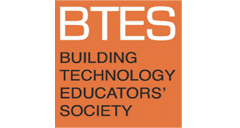Methods to Monitor and Simulate Existing Residences: Analyzing and Improving Energy and Comfort for Native Hawaiian Homeowners
- Wendy Meguro (University of Hawaii)
- Manfred Zapka (University of Hawaii)
- Eileen Peppard (University of Hawaii)
Abstract
To support the State of Hawaii’s goals of improving energy performance of buildings and reducing dependence on fossil fuels, this study develops design recommendations that could improve the energy efficiency and thermal comfort of hundreds of existing and future homes for native Hawaiian families.
This poster shares the methods and learning objectives used by faculty, researchers, and a team of architecture, electrical and mechanical engineering, and computer science students to chart a path to net-zero site energy use in residences in sub-tropical climates by monitoring and simulating existing houses.
The faculty from Architecture and Sea Grant structured the research project into multiple phases over two years: 1) Monitor Existing Buildings; 2) Calibrate Simulated Whole Building Energy Models; 3) Simulate Potential Design for Future Energy Code; 4) Simulate Potential Energy Efficiency Improvements; 5) Estimate Potential Renewable Energy Production and; 6) Communicate Recommendations to Developers and Residents.
In this study, three existing house typologies are studied: naturally ventilated (no air conditioning); partially air-conditioned; and centrally air-conditioned. Student and senior researcher teams monitor and manage data for temperature, humidity, and sub-metered for electricity in nine houses for one year. Air conditioning comprises a larger portion of the monitored houses’ total energy use as compared to national hot-humid climate residential averages. The monitored data shows most occupants chose to use air conditioning year round despite the mild climate and high electricity rates. In addition, monitored data shows plug loads vary between houses by more than a factor of two.
Student researchers using computational building performance simulation in NREL’s BEopt with Energy Plus find that the most effective energy efficiency measures are 1) improving the air conditioning SEER rating and 2) increasing the thermostat cooling setpoint while using ceiling fans with occupancy sensors. The team graphically communicates recommendations and presents them to developers and homeowners for potential incorporation into the next hundreds of homes planned for construction.
Keywords: Energy Efficiency, Residential, Sub-tropical, Thermal Comfort, Energy Simulation
How to Cite:
Meguro, W., Zapka, M. & Peppard, E., (2019) “Methods to Monitor and Simulate Existing Residences: Analyzing and Improving Energy and Comfort for Native Hawaiian Homeowners”, Building Technology Educators’ Society 2019(1). doi: https://doi.org/10.7275/mpa9-n865
Downloads:
Download PDF
187 Views
45 Downloads
